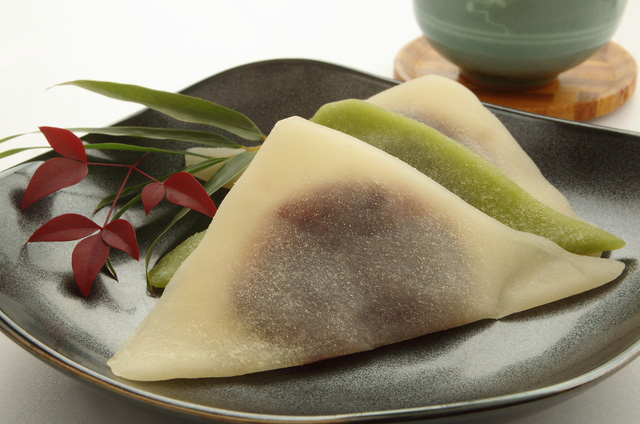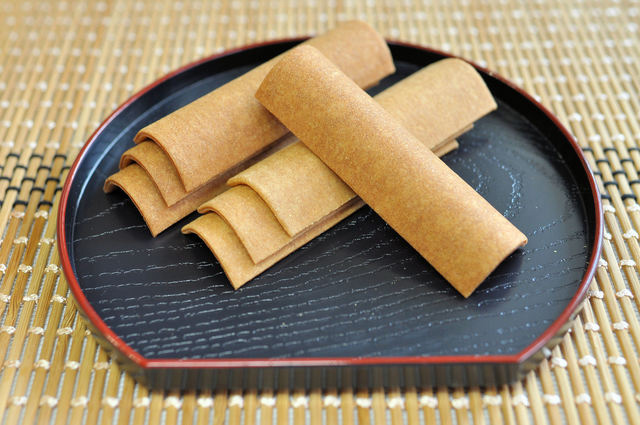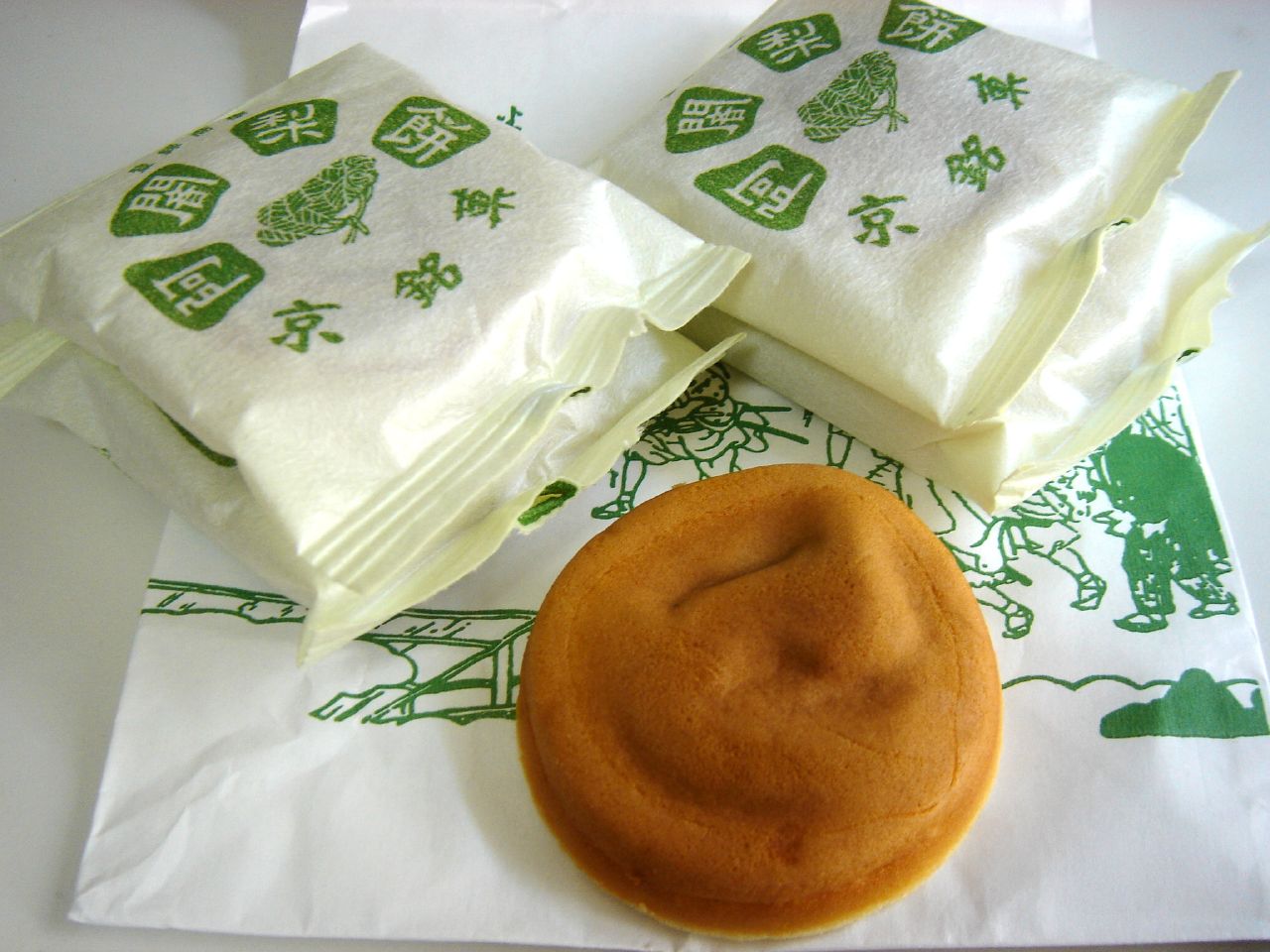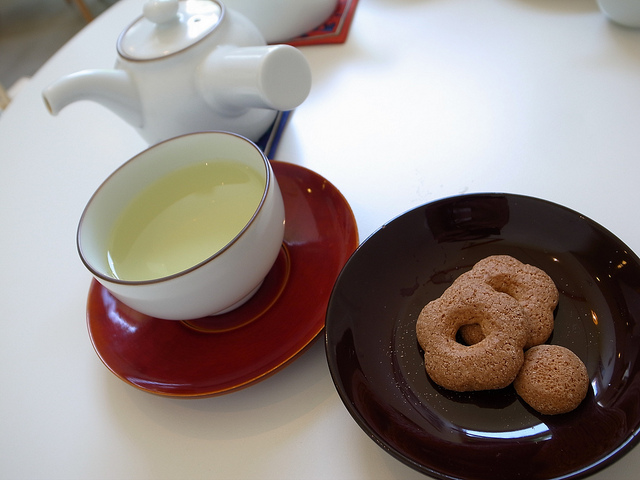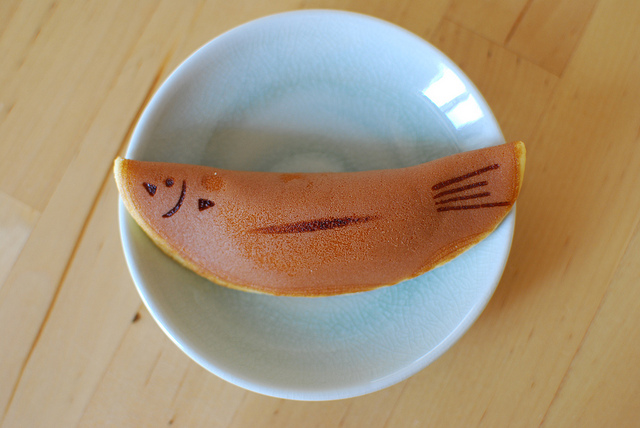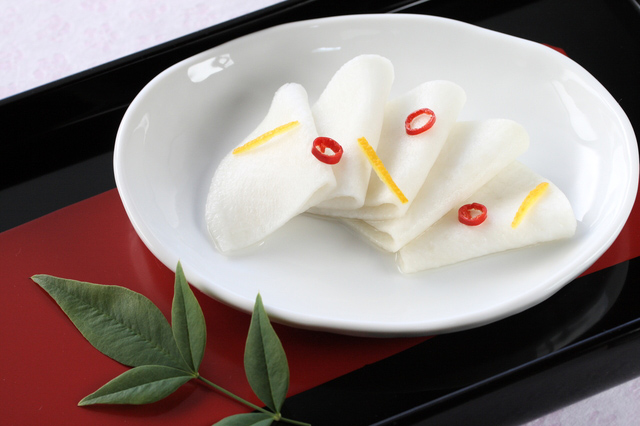
Top 30 Must-Buy Food Souvenirs from Kyoto
If you ever have the chance to visit Kyoto, you’ll definitely want to buy some of the typical Kyoto souvenirs. Here, we'll introduce some of the most popular (and some quite unique) souvenirs from Kyoto.
This post may contain affiliate links. If you buy through them, we may earn a commission at no additional cost to you.
1. Nama Yatsuhashi
PIXTANama yatsuhashi is one of the most popular souvenirs from Kyoto that a majority of tourists buy when they visit. It is a Japanese sweet, sweet bean paste sandwiched in soft dough into a triangular shape. It has a very simple flavor, but one that you will not be tired of. In addition to the regular version, you can find all sorts flavor variations, including green tea, chocolate, strawberry, banana and blueberry.
HP:http://www.otabe.kyoto.jp/en/sweets/otabe_nm.html
2. Yatsuhashi
PIXTAYatsuhashi is a typical Kyoto souvenir made from rice flour, sugar and cinnamon. The rectangular shape is said to represent the koto (a traditional string instrument of Japan) or a bridge. It has a refined and elegant taste. At the Izutsu Yatsuhashi store in Ukyo-ku, Kyoto you can try and cook it for yourself.
HP:http://www.otabe.kyoto.jp/en/sweets/yatsuhashi.html
3. carré de cannelle (Nikiniki)
This is a popular Kyoto sweet with a unique taste and texture. Sweet bean paste or fruits are wrapped in yatsuhashi dough in the shape of a flower. There are seasonal versions as well, with cherry blossom and Gion Festival motifs that are almost too beautiful to eat.
HP:https://tabelog.com/en/kyoto/A2601/A260201/26017721/
4. Cha no Ka (Malebranche)
Malebranche’s Cha no Ka is made from carefully selected Kyoto green tea leaves to make a delicious langue de chat with a rich green tea flavor. The combination of the slight bitterness of green tea and the sweetness of the white chocolate sandwiched in between is exquisite. The trendy look along with the crispy texture is popular among people of all ages.
HP:http://www.malebranche.co.jp/(Japanese Only)
5. Senju Senbei (Kogetsu)
Cream that is not too sweet but light is sandwiched between two crispy waffle biscuits. The name derives from the similarity of its appearance to a crane flying between the waves, which is a celebrated view. It matches coffee well. Its long shelf life makes it ideal as a souvenir of your trip to Kyoto.
HP:https://www.kogetsu.com/en/
6. Konpeito (Ryokujyuan Shimizu)
Japan’s one and only konpeito specialist store, Ryokujuan Shimizu is well know for the high quality of its konpeito. Made over a number of days with the utmost skill and care, these cute star-shaped sugar candies, konpeitos, are popular as a souvenir of Kyoto.There is a wide line-up of flavors that can be enjoyed by everyone, including chocolate, tomato, melon and sweet potato, making them a great gift from your travels.
HP:http://www.konpeito.co.jp/(Japanese Only)
7. Ajarimochi (Mangetsu)
PROekkun/FlickrThe ajarimochi, sold at the famous Kyoto sweet store Mangetsu, is said to have come from mochi, or sticky rice cakes, that buddhist priests ate during their training. The name "ajari" is said to come from a high-ranking priest who trained at Mt. Hiei in the north east of Kyoto. The soft outer layer and the sweet bean paste made from dainagon azuki beans make it a truly exquisite sweet.
HP:http://www.ajyarimochi.com/(Japanese Only)
8. London-yaki
London-yaki is a castella sponge bun sold at the Shinkyogoku Shopping Arcade in Kyoto. Filled with white bean paste, it has a lightly sweet flavor. You can enjoy watching the staff cook them one by one at the store.
HP:https://tabelog.com/kyoto/A2601/A260201/26007251/ (Japanese Only)
9. Green Tea Corneta (Jouvancelle)
Green Tea Corneta is a popular Kyoto sweet made of dough lightly flavored with green tea wrapped and baked. It is light and crispy and it crumbles deliciously in your mouth. One box contains quite a few, which also makes it a great souvenir.
10. Zen Castella (Zen-ka Shoin)
This castella sponge is made from the eggs of chicken, that are raised on black soybeans from Tamba in Kyoto. A very moist sponge with a strong yolk flavor, it is almost as though you are eating the rare, creamy sponge mix. The store is in a 300-year old house which has been refurbished, giving it both a modern and traditional atmosphere.
HP:http://www.zen-kashoin.com/item/zen-castella/item1/(Japanese Only)
11. Drawing (UCHU wagashi)
A newly opened store in Kyoto selling rakugan, or dried sweets made of soybeans, flour and sugar, has been attracting a lot of attention since its opening. Made using wasanbon, a high quality Japanese sugar, these colorful sweets come in a variety of shapes including animals and the temples of Kyoto, and just looking at them can be fun.
HP:http://uchu-wagashi.jp/(Japanese Only)
12. Kyo Baumkuchen (Otabe)
This is a baumkuchen made from layers of dough mixed with tofu from Kyoto and a blend of green tea from Uji. The crunchy outer layer coated with sugar and the soft inner sponge are a delicious combination.
HP:http://www.otabe.kyoto.jp/index_en.html
13. Kyoame Koicha Temari (Crochet)
This pretty sweet resembles a temari, a traditional Japanese ball, that was popular with the nobility of Kyoto. Carefully made in a small studio, these beautiful sweets are like works of art. There are all sorts of flavors and colors, such as mint, chocolate and cherry blossom and you can buy them in sets.
HP:http://crcht.com/products/58468610.php(Japanese Only)
14. Oike Senbei (Kameya Yoshinaga)
This is a senbei, rice crackers, made of lightly-baked sticky rice and sprinkled with finely ground sugar with an elegant taste that melts in the mouth. Its salty-sweet flavor with a slight sent of soy sauce is an important characteristic. They are sold in cans, which makes them easy to carry around without breaking, ideal as a souvenir of your travels.
HP:http://www.kics-llc.co.jp/zh_cn/topics_detail19/id=5227(Japanese Only)
15. Soba-boro
Hiro - Kokoro☆Photo/FlickrIt is a type of biscuit made of flour, buckwheat flour, sugar and egg, with a slightly rough and plain texture. It has the traditional Japanese flavor of soba, or buckwheat. The pretty shape is said to represent the blossom and buds of the plum tree.
HP:http://www.kawamitiya.co.jp/(Japanese Only)
16. Mamemochi (Demachi Futaba)
This is a rice cake with beans made by the popular traditional Japanese sweet shop Demachi Futaba in Demachi yanagi, Kyoto. It is made with green peas from Furano in Hokkaido and other carefully selected ingredients and is prepared in a traditional way passed down over generations. Its softness and a simple but delicious taste is unforgettable.
HP:https://tabelog.com/kyoto/A2601/A260302/26001520/(Japanese Only)
17. Dorobo (Koshiya)
This is a famous sweet from Koshiya, a sweet shop on the path from Nijo Castle to the Shinsenen Garden. It is made of deep fried tofu batter marinated in brown sugar. The name for this delicious sweet, “dorobo,” meaning thief in Japanese, is said to come from the fact that they are so delicious that people would go as far as stealing them to eat them. There is a large version as well called “odorobo,” which means master thief!
HP:http://wagashi.kotolog.jp/post/%E3%81%A9%E3%82%8D%E3%81%BC%E3%81%86%E3%80%80%E6%A0%BC%E5%AD%90%E5%AE%B6/(Japanese Only)
18. Torori Warabi-mochi (Warabian)
If you ever visit Kyoto, we recommend that you try the warabimochi, a jelly-like sweet made from bracken starch, sprinkled with sweet toasted soybean flour, known as kinako. If you are looking for great warabimochi, you should definitely try Warabian’s torori warabimochi. Made from specially selected ingredients, it is a perfect match for the wasanbon sugar and black soybean kinako. The refreshing sweet taste will have you hooked!
HP:http://warabian.net/(Japanese Only)
19. Goshiki-mame
This is a Japanese confectionery, sugar covered beans sold from as far back as the Meiji Era. These colorful sweets are often given in celebration. Made with high quality sugar, they have an elegant taste that will keep you coming back for more.
HP:http://www.mamemasa.co.jp/(Japanese Only)
20. Ayu
dreamcat115/FlickrThis is a sweet likened to the fish of the same name (ayu, known as sweetfish in English) that is found in the summer swimming in the Kamogawa River and the Lake Biwa Canal in Kyoto. It is a sweet made from soft dough filled with gyuhi, a soft sweet made with rice flour similar to Turkish delight, but there are a number of variations as well, including ayu filled with sweet bean paste or green tea flavored ones. The cute appearance and the great taste make it a popular sweet with people of all ages.
HP:https://taneya.jp/okashi/kisetsu/chiayu.html(Japanese Only)
21. Seijokankidan (Kameya Kiyonaga)
This sweet, seijokankidan also known as “odan,” has a long history spanning over 1,000 years where it was brought into Japan from China during the Nara Period. In the old days, it was a sweet of the nobility. Made of sweet bean paste wrapped in dough mixed with 7 different spices and fried in oil, it has a strong scent and a very deep flavor.
HP:http://www.kameyakiyonaga.co.jp/(Japanese Only)
22. Yurei Kosodate Ame
This is a traditional sweet that is sold at Rokudo-no-tsuji, a place that was once known as the funeral grounds of Kyoto. The name of the sweet comes from the legend of the ghost of a deceased mother who came to the shop every night to buy a sweet for her child. (Yurei means ghost and kosodate means child raising.) It is a glossy, amber-colored sweet with a deep flavor, still made today in the same way as in the past.
HP:http://kosodateame.com/(Japanese Only)
23. Kitsune Senbei
A unique senbei in the shape of a kitsune, or fox, mask, sold at Fushimi Inari Shrine. Foxes are well loved at the Fushimi Inari Shrine as the servants of the gods. The senbei batter is mixed with white miso which when baked, gives it its orange color.
HP:http://inari-village.com/hogyokudo?locale=en
24. Chigo Mochi (Sanjo Wakasaya)
This is a sweet that has its roots in the Gion Festival, one of Japan’s major festivals. It is said to have originally been given to people visiting the shrines during the festival, and is supposed to ward off evil and bring in good fortune. Made of sweet white bean paste wrapped in gyuhi and sprinkled with frozen mochie, it is wrapped in triangular wrapping paper and served on skewers.
HP:http://www.wakasaya.jp/(Japanese Only)
25. Uji-cha
Uji-cha, one of Japan’s 3 great teas, is said to have been made in Kyoto from the early Kamakura Period, in around 1200 AD. It has a great fragrance and taste, and was said to be loved by many great historical figures, including Hideyoshi Toyotomi. The area around the Byodo-in Temple in Uji is full of tea shops selling Uji-cha, and the mellow fragrance of the tea fills the air.
HP:http://www.kyocha.or.jp/(Japanese Only)
26. Senmai-zuke
PIXTAA pickled dish made of the turnips of the Shogoin Temple, one of the vegetables of Kyoto, known for its size. Harvested in autumn, the turnip is cut into slices and fermented. By winter, it becomes a smooth, fine pickled dish, and is often used as a byword for the winter flavors of Kyoto.
HP:http://www.senmaiduke.com/(Japanese Only)
27. Ichiwan Miso-shiru (Honda Miso Honten)
If you have ever wanted to try the traditional miso shiru, or miso soup, this is the thing for you. The lightly roasted fu, or wheat gluten, contains freeze-dried nameko mushrooms and tofu. By splitting the fu and adding hot water, you can enjoy some great miso soup. It is not your typical souvenir, but is popular with the tourists.
HP:http://www.honda-miso.co.jp/(Japanese Only)
28. Uji Maccha Nama Chocolate (Ito Kyuemon)
Ito Kyuemon is a shop that specializes in maccha, or green tea, flavored sweets, located near the Byodo-in Temple in Uji. The green tea is ground in a stone mill in the traditional way, making it into a very fine, vivid green powder. The balance of the sweet white chocolate enhances the slightly bitter taste of the green tea, making for an exquisite sweet.
HP:http://www.itohkyuemon.net/index.html
29. Ohigashi (Kashundo)
With motifs of nature and the seasons, ohigashi are beautiful to look at. With over 100 different shapes and various flavors you can choose from, you can create your own personal souvenir for the people back at home. You can also try making your sweets at the Kashundo studio.
HP:http://www.kanshundo.co.jp/(Japanese Only)
30. Fukudaruma (Funahashiya Sohonten)
Fukudaruma, from Funahashiya Sohonten located near the Sanjo Ohashi bridge, are small baked sweets with a delicate taste. Each sweet has a different expression drawn on it, making it fun for both adults and children alike. The daruma, or dharma, is said to bring good fortune, making these ideal as a gift.
HP:http://www.funahashiya.com/material/fukudaruma.html(Japanese Only)
While Kyoto has many traditional souvenirs made with green tea and sweet bean paste, in recent years, more modern sweets are growing in popularity. With so much variety, you are sure to find something you will love.
Also Check:
20 Kyoto souvenirs you should definitely buy
If you want to know more about souvenirs from Japan, also check these articles:
[Overview]
15 Must-buy Souvenirs From Japan
50 Medicines and Beauty Products from Drug Stores in Japan Picked by Japanese Pharmacists
10 Must-buy Traditional Japanese Accessories For Souvenirs
[Tokyo]
20 Souvenirs You Should Buy in Tokyo
30 Must-Buy Souvenirs at Narita Airport
[Osaka]
10 food souvenirs you can only buy in Osaka
20 Must-Buy Souvenirs from Osaka
[Hokkaido]
11 Sweet Souvenirs To Buy In Hokkaido
[Beauty and Cosmetics]
20 Beauty Products You Can Buy at Drugstores At Japan
11 Affordable Skincare Products to Buy in Japan
11 High-end Skincare Products to Buy in Japan
15 Must-Buy Japanese Cosmetic Brands
10 Japanese beauty appliances that can be used worldwide
20 Japanese Beauty Electronics You Should Check Out
[Fashion]
11 Recommended Japanese Lingerie Brands to Buy in Japan
12 Japanese Lingerie Brands You Need To Check Out
11 Lolita Brands You Should Check Out in Japan
19 Stylish Women's Apparel Brands To Check Out In Japan
The information in this article is accurate at the time of publication.

